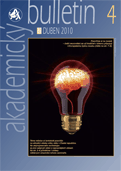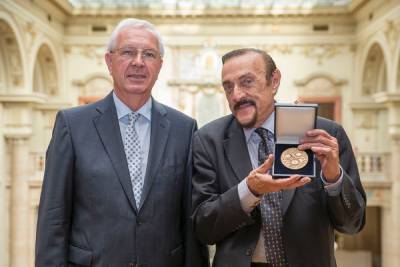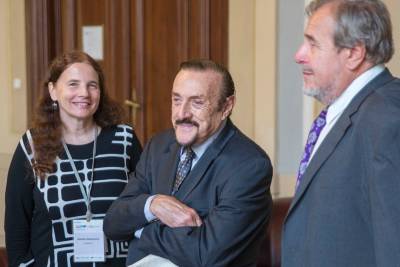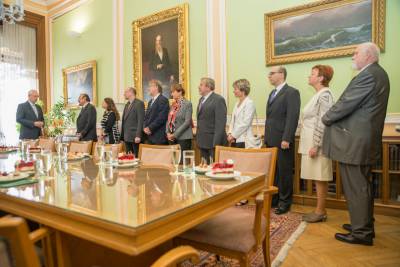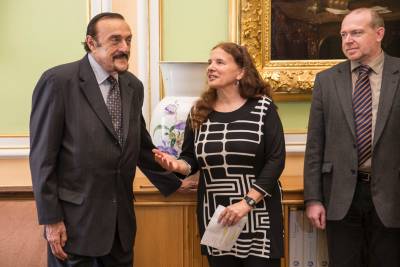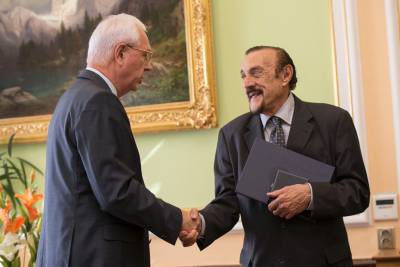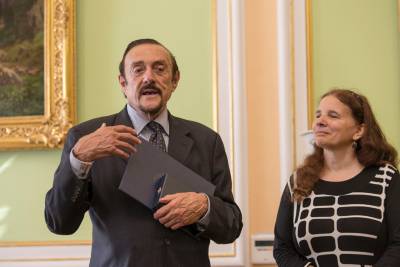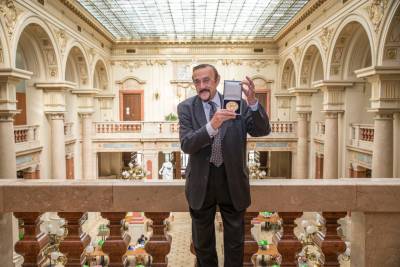public non-university research institution, which comprises a system of scientific institutes. It conducts its activities in accord with Act No. 283/1992 Coll., On The Czech Academy of Sciences (CAS), and other legal regulations. Research conducted by the CAS endeavours to advance knowledge on an international scale while however respecting the current needs of Czech society. The supreme autonomous body of the CAS is the Academy Assembly. The executive body of the CAS is the Academy Council with the President of the CAS at its head. Its permanent advisory body is the Council for Sciences, which deals with the scientific policy of the CAS. These all-academic bodies are always elected for four-year periods.
American psychologist Prof. Philip G. Zimbardo received the highest award of the Czech Academy of Sciences
5 Oct 2015
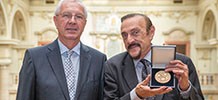
Three professors from the Czech Academy of Sciences on the List of the Most Cited Scientists of the World
5 Oct 2015

Conference on Democracy (not only) in Muslim Countries
5 Oct 2015
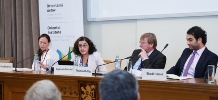
New possibilities of imaging molecules with atomic force microscope
6 Aug 2015
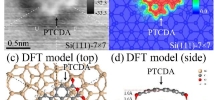
Scientists from the Institute of Physics of the Czech Academy of Sciences (CAS) together with colleagues from Osaka University in Japan presented in the journal Nature Communications [1] a new method that significantly advances the current possibility for atomic force microscopes to image chemical structures of individual molecules. Recent developments in scanning microscopy enable us to resolve the chemical structure of individual molecules deposited on surfaces. The sub-molecular resolution of individual molecules opens up entirely new possibilities in the study of physical and chemical properties of molecular nanostructures. However, it was possible to carry out these measurements only at very low temperatures close to absolute zero with specially modified microscope tips.
Chile and Canary Islands selected for the construction of the largest gamma-ray observatory
22 Jul 2015
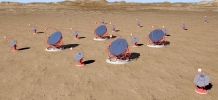
The Legacy of Charlemagne
22 Jun 2015
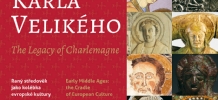
Hunting for insects with a crane: forest ecology research on six continents will be spearheaded by the Czech Academy of Sciences
26 Jun 2015
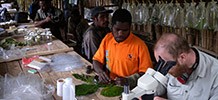
How would forests entirely devoid of insects look like? And why most of insect species prefer life in tropical jungles to temperate zone forests? Questions asked by a curious child, perhaps, but also by international research team from the Czech Academy of Sciences, recently supported by the European Research Council to study forests all over the world, and build a new canopy crane in the rainforests of Papua New Guinea.
International conference “The Present and Future of Institutions of Non-University Research”
28 May 2015
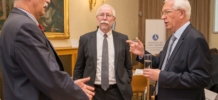
Non-university research has a future
The future of non-university research and its connection with higher education institutes, industrial research and business were the main themes of an international conference that the Czech Academy of Sciences organized on Wednesday, 27 May 2015 at its headquarters. The roundtable discussions were attended by the elite of European science – Martin Stratmann (president of the most important German scientific institution, the Max Planck Society), Peter Haslinger (director of the Herder-Institute, Leibniz Association), Soren Wiesenfeldt (director of research at the Helmholtz Association), Ed Noort (vice-president of ALLEA – All European Academies) and other guests from Italy, Great Britain and the USA.
The Czech Academy of Sciences at EXPO 2015
28 May 2015
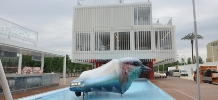
On 1 May, the gates of the world EXPO 2015 with the motto “Feeding the Planet, Energy for Life” opened in Milan. The raising of the exposition’s flags was accompanied by the tones of Antonín Dvořák’s New World Symphony and precisely the Czech pavilion was selected by the Italian media as one of five to be recommended for a visit. Their last discoveries are then presented also by two institutes of the Czech Academy of Sciences. The Institute of Organic Chemistry and Biochemistry (IOCB) in the Laboratory of Life presents research aimed at seeking new human medications for lifestyle diseases. A human cell as a miniature chemical plant in which thousands of events take place necessary for the healthy functioning of the organism was rendered for the Laboratory of Life and the IOCB by the artist Jakub Nepraš.
Public Lecture with Nobel Laureate Finn Kydland
15 Apr 2015
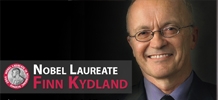
Prof. Finn E. Kydland (University of California, Santa Barbara), 2004 Nobel Laureate in Economics, will give a public lecture on "Innovation and Capital Formation in Today's Policy Environment".
Jan Švejnar wins 2015 IZA Prize in Labor Economics
15 Apr 2015
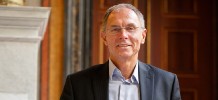
The 2015 IZA Prize in Labor Economics goes to Jan Švejnar, the James T. Shotwell Professor of Global Political Economy and Director of the Center on Global Economic Governance at Columbia University’s School of International and Public Affairs, New York and a chairman of the Executive and Supervisory Committee of CERGE-EI in Prague. Czech economist was recognized for his work on economic issues in labor, development and the transition from socialist to market economies.
Prestigious European grant for a young scientist from the Institute of Molecular Genetics of The CAS
5 Mar 2015
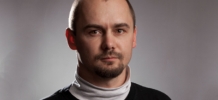
The biologist doc. Mgr. Petr Svoboda, Ph.D., from the Institute of Molecular Genetics of The CAS acquires a significant grant from the European Research Council – the ERC Consolidator Grant. His project entitled D-FENS was selected from more than 2,500 proposals. The scientific work of Svoboda’s laboratory will hence be supported by EUR two million for the next five years. ERC Consolidator Grants are intended for young scientists, who obtained their doctorate between seven and twelve years before submission of their proposal, have distinctly above-average scientific results considering the given field and their career stage and prepare a high quality project with an original idea.
Scientists from The CAS have explained how plants turn light into heat
9 Mar 2015
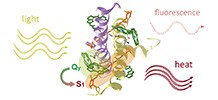
The prestigious scientific journal Nature Chemical Biology has published an expert article of the scientific teams of Ing. Roman Sobotka, Ph.D., from the Institute of Microbiology of The CAS (Centre Algatech in Třeboň) and prof. RNDr. Tomáš Polívka, Ph.D., from the Biology Centre of The CAS and the University of South Bohemia in České Budějovice. Their breakthrough discovery describes the physical nature of the conversion of light radiation to heat, which takes place in light-harvesting complexes of plants. “They fulfil the role of kind of microscopic solar panels,” explains Ing. Roman Sobotka, Ph.D. However, if too much energy is absorbed, there is a threat of damage to the photosystems and light-harvesting complexes as a large part of the energy transforms into heat, through which they safely dispose of the energy. The mechanism of this occurrence was just discovered by scientists from The Czech Academy of Sciences.


